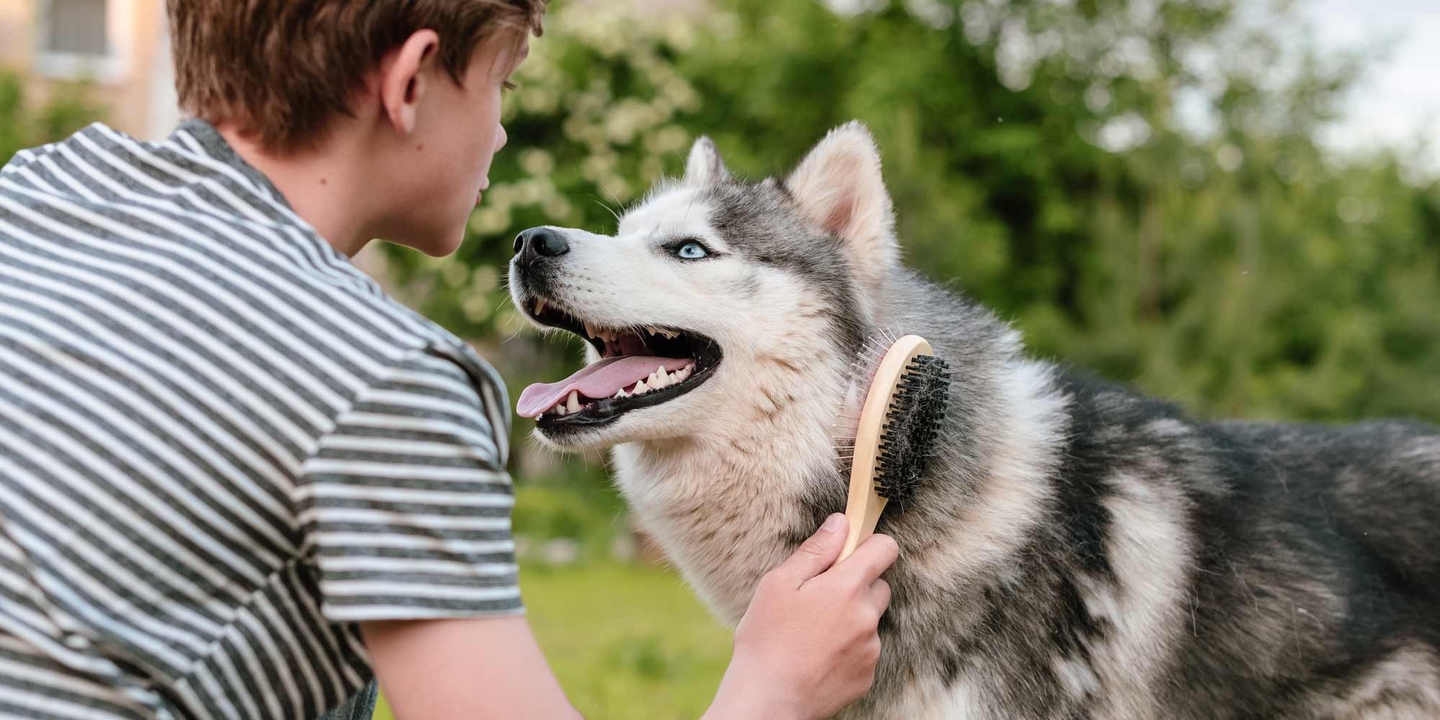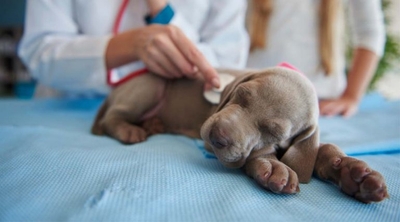5 Tips to Control Seasonal Shedding in Dogs
4 min read
Dog shedding is something nearly every dog owner has to deal with at some point. While it can be frustrating to find fur all over your home (especially if you have allergies), shedding is a natural and essential part of a healthy dog’s life.
The good news is that you can take steps to reduce all that fur. To best withstand dog shedding season, it’s essential to understand how shedding works. You can also utilize certain techniques to help keep your dog comfortable and your house fur-free.
Why do dogs shed?
If you’re wondering why your dog is shedding so much, it’s simply because he has fur. According to The Spruce Pets, any animal with hair sheds (even people!), including your furry pup. It’s part of the hair’s natural growth cycle. Hair growth occurs in several stages:
- Anagen phase: New hair grows.
- Catagen phase: Hair reaches a maximum length and stops growing.
- Telogen phase: Hair doesn’t grow or fall out.
- Exogen phase: Hair falls out (or fur sheds).
PetHelpful reports that these phases can vary from breed to breed. Poodles need clippings frequently because most of their hair stays in the anagen phase, similar to people. Other dogs may enter the exogen phase during specific seasons, such as when it gets warmer (here’s looking at you, Huskies!). Several factors can affect shedding, including the environment, hormones, breed, age, and health.
Fetch by WebMD advises, no matter the breed, shedding is important to maintaining a dog’s healthy skin and coat. It provides a way for dogs to get rid of old and damaged hair, making way for healthier new hair. It can also help them adjust to the changes in seasonal temperatures.
When is peak dog shedding season?
Typically, seasonal shedding is abundant in fall and spring. Some dogs shed year-round, so you might not notice their loose fur as often. Dogs with double coats are more likely to shed large amounts of fur seasonally. They have an outer coat of long, stiff hairs and an undercoat of soft hairs that help keep them warm. These dogs lose their lighter summer undercoat when it gets colder, and their thick winter undercoat when it gets hotter.
How long do dogs shed?
If your dog is a seasonal shedder and spends most of her time outdoors, expect her to shed her winter coat around March through June and her summer coat around September through November. However, if she’s an indoor dog most of the time, the cycle might get disrupted. Some seasonal shedders who spend all their time indoors may lean closer to shedding year-round.
Do all dogs shed?
Most dogs shed, but it depends on the breed. If you want a dog that doesn’t shed (or rarely sheds), you must be selective when adopting. For example, the American Kennel Club lists Afghan Hounds as low shedders because they have a silky, long coat that more closely resembles human hair. However, they can still lose their hair sometimes (just like people) and need frequent grooming.
The AKC reports that the American Hairless Terrier is also considered a low-shedding dog due to having a very thin coat that rarely sheds. (Note, however, that there are hairless and coated varieties of this breed.) Hairless pups need extra care from sunburns and cold weather.
Five tips to control seasonal dog shedding
You can’t stop your dog from shedding unless you have a breed that rarely sheds. It’s a healthy part of your pup’s life. However, you can take the following steps to reduce shedding and make it more manageable.
1. Brush your dog regularly
The first step is to brush your dog regularly. The Texas A&M School of Veterinary Medicine & Biomedical Sciences recommends that you brush your pup for five to 10 minutes three to four times weekly. If you have a dog whose hair grows continuously, like many of the Doodle varieties, you might need to take your pup to the groomer for a haircut now and then.
2. Use the right kind of brush
Using the right kind of brush is important. If your dog has a curly coat, consider a wire-pin brush. Curly-haired dogs may appear to shed less, but their loose fur could be getting caught in their coat, putting them at risk of matting, advises PetHelpful.
A short-haired dog might benefit from a rubber curry comb or a stiff bristle brush, while a dog with a longer coat may benefit from a long-bristle brush. For dogs with double coats, you may want a de-shedder brush made specifically for undercoats. If you’re not sure what’s best for your pup, ask your veterinarian.
3. Give your dog a bath
Bathing your dog can help loosen fur, letting loose fur fall in your tub rather than on your carpet. If your dog’s a seasonal shedder, you should bathe him weekly during shedding season and twice a month when he’s shedding less. Look for a shampoo with all-natural ingredients designed for skin health, rather than shampoos with chemicals or artificial colors and scents.
4. Visit your veterinarian regularly
Visit your veterinarian regularly, especially if you notice your dog is shedding more than normal. Central Broward Animal Hospital reports that stress or anxiety in dogs can cause excess shedding. Even allergies in dogs can cause hair loss, and pups can be allergic to anything from food to a household cleaner or even flea bites. Skin conditions like ringworm can also cause hair loss, and more serious illnesses such as thyroid disorders. So, remember to visit your veterinarian.
5. Ask your vet about dog food or supplements to help reduce shedding
In some situations, dog food or supplements such as omega-3 fatty acids might help with shedding problems, especially if a health issue such as allergies or an unbalanced diet is the root cause, reports WikiHow. Even dehydration can cause hair loss. Be sure to consult with your veterinarian before trying anything new on your dog; don’t experiment on your own.
While shedding is a natural part of a dog’s life, regular grooming and a healthy lifestyle can help reduce the amount of loose fur flying around your home. As an added bonus, your time spent brushing your pup can help build a deeper bond between you and your furry best friend.
Progressive has your back
Investing in pet insurance is a great way to help protect your dog from conditions that can cause excessive shedding. At Progressive, through our friends at Pets Best, you can customize our pet insurance plans for your pet’s unique needs. In addition, Pets Best policyholders can speak to a veterinary expert anytime through a 24/7 Pet Helpline, which can be a big help when trying to figure out ways to control dog shedding.






